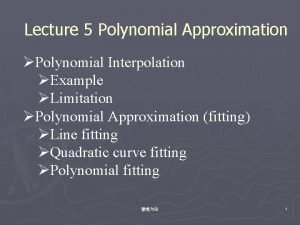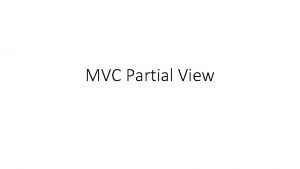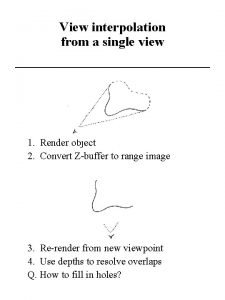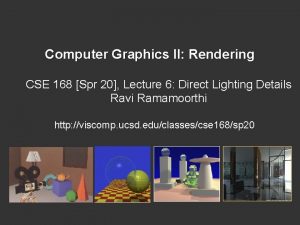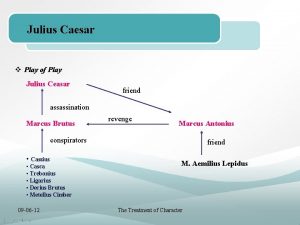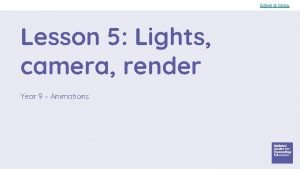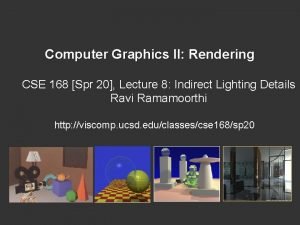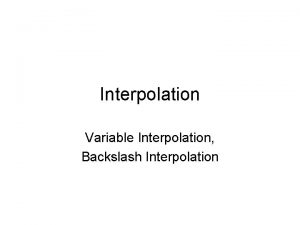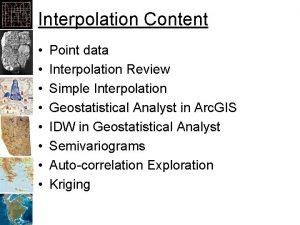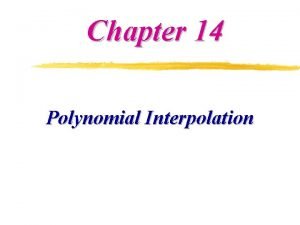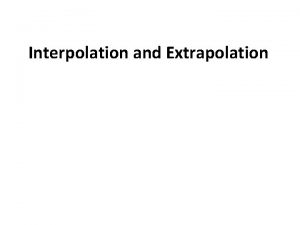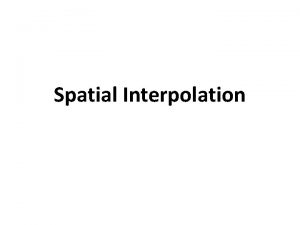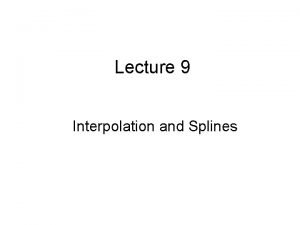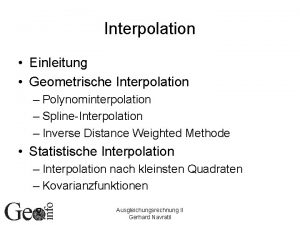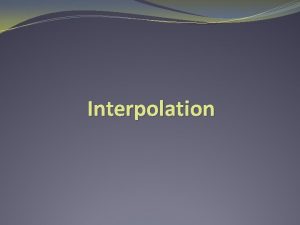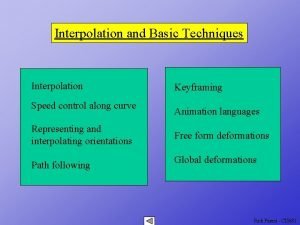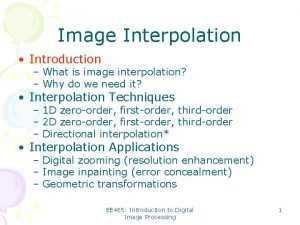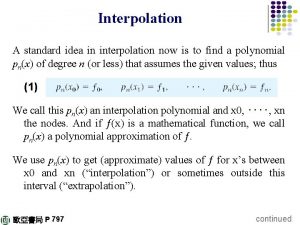View interpolation from a single view 1 Render















- Slides: 15

View interpolation from a single view 1. Render object 2. Convert Z-buffer to range image 3. Re-render from new viewpoint 4. Use depths to resolve overlaps Q. How to fill in holes?

View interpolation from multiple views 1. Render object from multiple viewpoints 2. Convert Z-buffers to range images 3. Re-render from new viewpoint 4. Use depths to resolve overlaps 5. Use multiple views to fill in holes

Problems with view interpolation • resampling the range images – block moves + image interpolation (Chen and Williams, 1993) – splatting with space-variant kernels (Mc. Millan and Bishop, 1995) – fine-grain polygon mesh (Mc. Millan et al. , 1997) • missed objects – interpolate from available pixels – use more views (from Chen and Williams)

More problems with view interpolation • Obtaining range images is hard! – use synthetic images (Chen and Williams, 1993) – epipolar analysis (Mc. Millan and Bishop, 1995) epipolar geometry cylindrical epipolar geometry

2 D image-based rendering Flythroughs of 3 D scenes from pre-acquired 2 D images • advantages – low computation compared to classical CG – cost independent of scene complexity – imagery from real or virtual scenes • limitations – static scene geometry – fixed lighting – fixed-look-from or look-at point

Apple Quick. Time VR • outward-looking – panoramic views at regularly spaced points • inward-looking – views at points on the surface of a sphere

A new solution: rebinning old views • must stay outside convex hull of the object • like rebinning in computed tomography

Generalization: light fields Radiance as a function of position and direction in a static scene with fixed illumination • For general scenes Þ 5 D function L ( x, y, z, q, f ) • In free space Þ 4 D function

Two-plane parameterization L ( u, v, s, t ) • planes in arbitrary position • uses projective geometry • fast incremental algorithms

A light field is an array of images

Spherical 4 -DOF gantry for acquiring light fields – 0. 03 degree positioning error (1 mm) – 0. 01 degree aiming error (1 pixel) – can acquire video while in motion

Light field video camera

Prototype camera array

Geometry-based versus image-based rendering conceptual world model construction real world image acquisition offline rendering model real-time rendering images image analysis image-based rendering real-time interactive flythrough

Another view: the geometry-based/image-based rendering continuum less knowledge of scene • enhanced video – panoramic – multiresolution – multiple viewpoints – video + alpha + Z • image-based rendering – QTVR – light fields more knowledge of scene • 3 D models
 Spline interpolation vs polynomial interpolation
Spline interpolation vs polynomial interpolation Partial views are an effective way to
Partial views are an effective way to Qualcomm snapdragon platform apis unreal unityverge
Qualcomm snapdragon platform apis unreal unityverge View interpolation
View interpolation Pygame default font
Pygame default font Spr render
Spr render Colortex render
Colortex render Julius ceasar play
Julius ceasar play Vray render elements compositing photoshop
Vray render elements compositing photoshop Vray frame buffer 3ds max
Vray frame buffer 3ds max Product-oriented layout example
Product-oriented layout example Back to beauty vray
Back to beauty vray Light camera render
Light camera render 168spr
168spr Vray back to beauty
Vray back to beauty Vray vfb
Vray vfb
